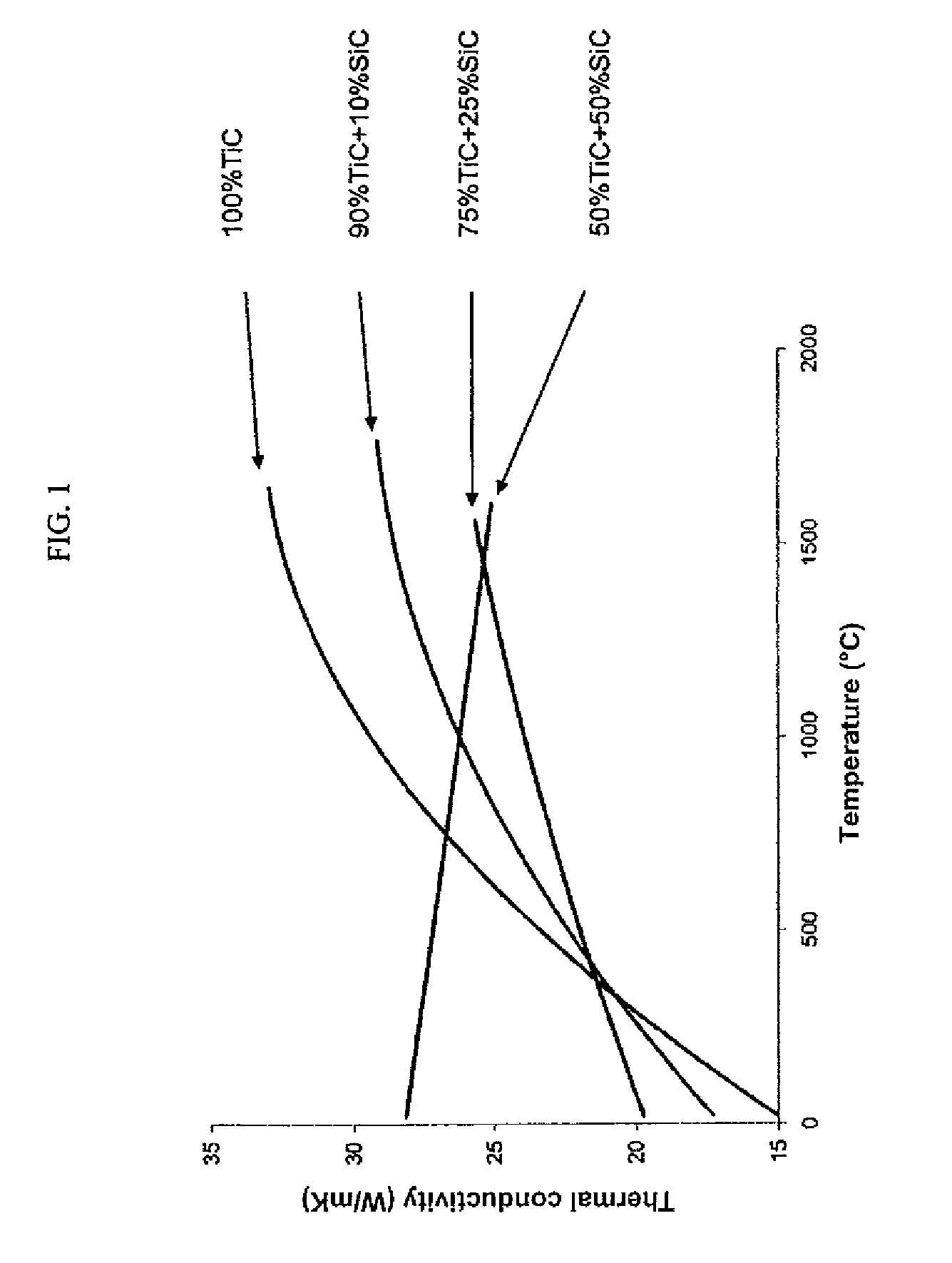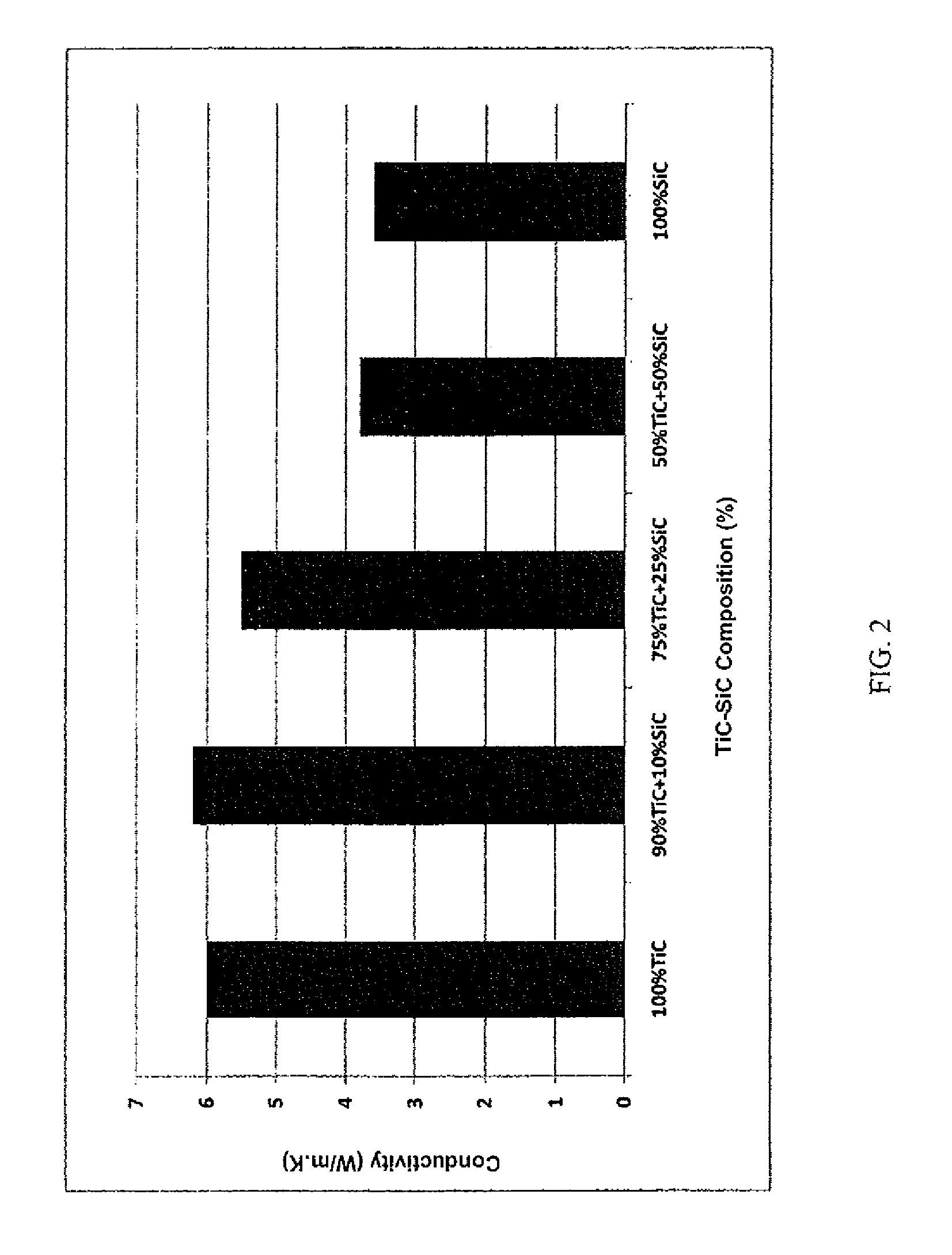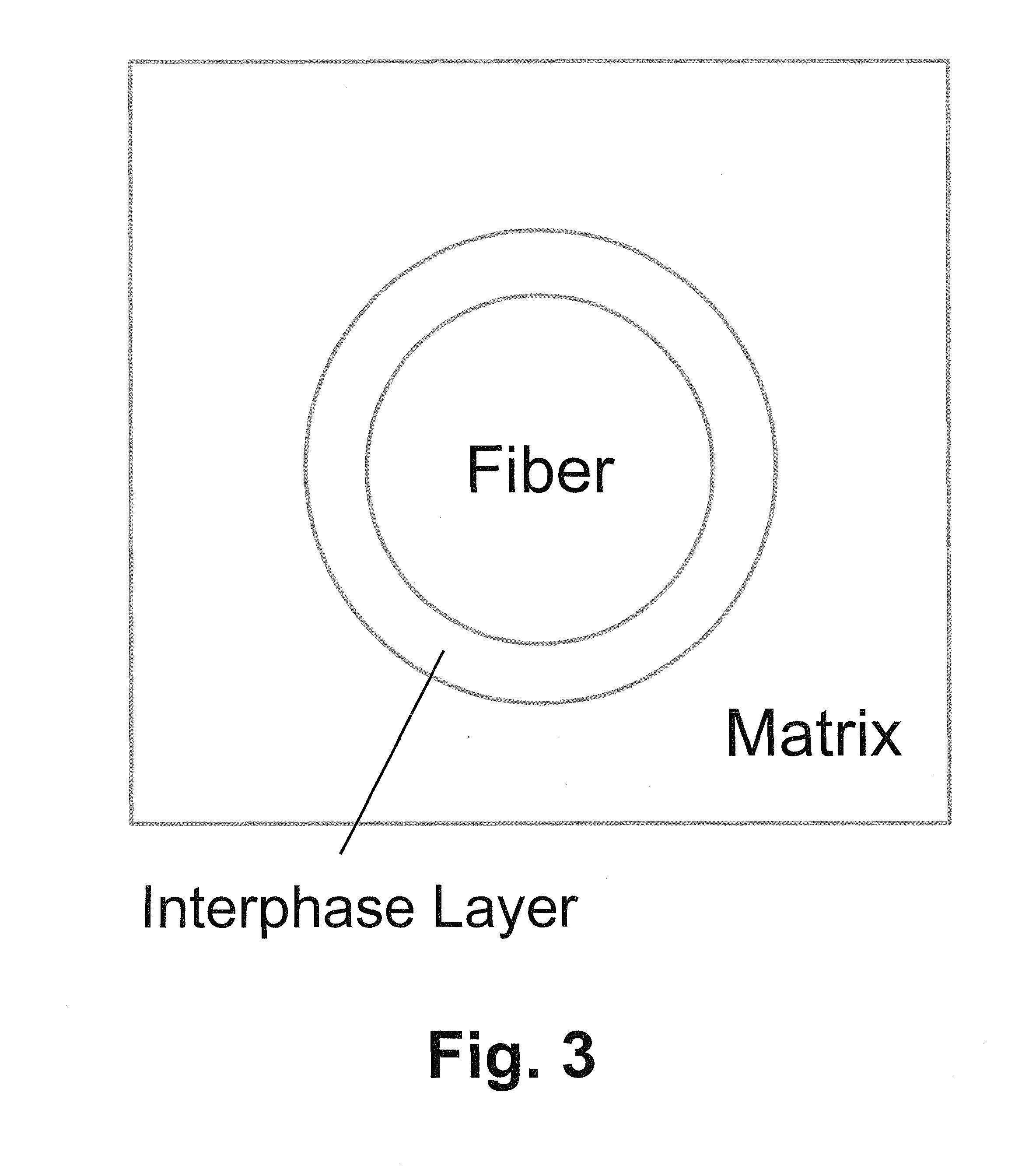Nuclear fuel cladding with high heat conductivity and method for making same
a technology of nuclear fuel and heat conductivity, which is applied in the field of nuclear fuel, can solve the problems of cladding swelling, loss of fuel confinement, and general brittleness to withstand the operating conditions of nuclear fuel cladding, and achieve the effect of optimizing the transfer of thermal energy generated
- Summary
- Abstract
- Description
- Claims
- Application Information
AI Technical Summary
Benefits of technology
Problems solved by technology
Method used
Image
Examples
first embodiment
[0083]In a first embodiment, the number of pulses in each of the TiC and SiC deposition sequences is reduced such that the deposited layer is discontinuous.
[0084]The TiC deposition conditions are those mentioned in the previous example.
[0085]For SiC deposition, the conditions are also similar to those of TiC deposition, except for the following parameters:[0086]gas precursors: H2 and MTS (methyltrichlorosilane of formula CH3SiCl3)[0087]temperature from 900° C. to 1050° C.[0088]working pressure from 1.5 kPa to 5 kPa[0089]αSiC (PH2 / PMTS) from ¼ to 5 (from ¼ to ½, residual carbon is seen to be formed, and beyond 3, there is no more residual carbon. However, the deposition rate increases when αSiC increases).
[0090]It should be noted that the deposition rate of the SiC layer is proportional to the temperature and pressure values shown.
[0091]In the present case, the following parameters effectively used for depositing SiC are as follows:[0092]temperature=1050° C.[0093]working pressure=4 k...
second embodiment
[0099]In a second embodiment, nano-sequenced depositions are made, namely depositions for which layers of different characteristics, having a mean thickness of 10 to 100 nm, are deposited consecutively. For that purpose, the precursor pulses specifically intended for TiC and SiC are produced consecutively (for instance, 40 pulses for SiC and 80 pulses for TiC, or 20 pulses for SiC and 40 pulses for TiC).
third embodiment
[0100]In a third embodiment, the SiC and TiC precursors are introduced together. Generally, the precursors and operating conditions are then selected from the following:[0101]TiCl4, SiCl4, CCl4H2 / 950° C. to 1150° C. / 100 kPa[0102]TiCl4, SiCl4, C3H8, H2 / 950° C. to 1150° C. / 4−40 kPa[0103]TiCl4, SiCl4, CH4, H2 / 950° C. to 1150° C. / 7 kPa[0104]TiCl4, SiH2Cl4, C4H10, H2 / 950° C. to 1150° C. / 100 kPa[0105]TiCl4, CH3SiCl3, H2 / 950° C. to 1150° C. / 1 kPa to 100 kPa[0106]TiCl4, SiCl4, C3H8, H2 / 950° C. to 1150° C. / 100 kPa
[0107]2—Thermal Properties of Ceramic Matrix Composite (CMC) Materials Comprising TiC.
[0108]Ceramic materials (without fibers and an interphase layer), with the same composition as the matrix of the four TiC-based CMCs made previously, are manufactured by sintering under pressure.
[0109]The four ceramic materials have the following TiC / SiC compositions in volume percentage: 100 / 0, 90 / 10, 75 / 25, 50 / 50.
[0110]These ceramic materials allow the relative thermal conductivity of the four pr...
PUM
| Property | Measurement | Unit |
|---|---|---|
| thickness | aaaaa | aaaaa |
| thickness | aaaaa | aaaaa |
| temperatures | aaaaa | aaaaa |
Abstract
Description
Claims
Application Information
 Login to View More
Login to View More - R&D
- Intellectual Property
- Life Sciences
- Materials
- Tech Scout
- Unparalleled Data Quality
- Higher Quality Content
- 60% Fewer Hallucinations
Browse by: Latest US Patents, China's latest patents, Technical Efficacy Thesaurus, Application Domain, Technology Topic, Popular Technical Reports.
© 2025 PatSnap. All rights reserved.Legal|Privacy policy|Modern Slavery Act Transparency Statement|Sitemap|About US| Contact US: help@patsnap.com



